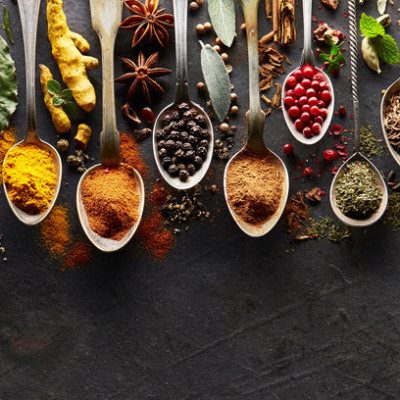Origin
Natural preservatives, mainly spices and plant extracts, have been used for many centuries in baking. Today, consumers are looking to steer clear from artificial additives and preservatives. Food is under close scrutiny and the demand for natural products is constantly growing.
Sources
Natural preservatives used in baked goods which allow for a longer shelf life can be categorized in several ways:
Antimicrobials
Moldy foods are unsightly, have off-flavors and are often dangerous. Some molds cause allergic reactions, respiratory problems or produce poisonous mycotoxins. Good sanitation practices and packaging control can help minimize contamination but there are also natural preservatives that help.
- Vinegar (acetic acid): At the right use level and under certain conditions, this weak organic acid can penetrate cell membranes and inhibit cell growth by increasing intracellular acidity.1
- Lactic acid bacteria: Lactic acid bacteria produce molecules such as organic acids, fatty acids, hydrogen peroxide, and bacteriocins (such as Nisin) that can inhibit mold growth.
- Plant extracts: Thyme, rosemary, cinnamon, clove, lemongrass, capsicums, bay leaf, ginger, garlic, and basil have been shown to disrupt cell membrane processes. Finding an effective level without changing organoleptic characteristics of the food product can be a challenge.2
- Cultured products and their metabolites: These are produced from fermentation of whey, wheat or corn syrup products with a standard dairy culture. Actives produced are mixtures of propionic, butyric, citric, lactic acids and peptides that can inhibit mold growth.3
- Natamycin: A natural anti-fungal agent derived microbially and used as a food preservative. It affects all yeasts and molds, so in yeast bread it is limited to a spray application after baking. It also finds use as a preservative in non-yeast leavened baked goods: tortillas, cakes and muffins.4
- Fruit concentrates: When raisin paste concentrate or prune juice concentrate is used in baked goods at concentrations between 5-12%, the natural organic acids (malic, benzoic and salicylate) have a preservative effect.3 These concentrates also function as humectants which helps to preserve food products.
- Tea extracts: Teas contain tannins and polyphenolic compounds that have been shown to have bactericidal and bacteriostatic properties against a range of bacteria.2
- Chitosan: It can be derived from the shells of crustaceans or chiber mushrooms and inhibits microbes by creating a barrier which can protect against microbial contamination and oxidation.
Antioxidants
Oxidation causes undesirable flavor changes, rancid off-notes, changes in color and often times loss of nutritional value in foods. This self-propagating reaction is not reversible and is seen predominantly in fats and oils as lipid oxidation. Antioxidants slow down the start of fat oxidation process by donating hydrogen atoms.
- Rosemary extract: The carnosic acid naturally present in rosemary functions as an antioxidant. Rosemary extract has a reputation as an effective and versatile natural antioxidant for food.
- Vitamin E (tocopherols): Mixed tocopherols are resistant to high temperature food processing steps and have good solubility in fats and oils.
- Acerola cherry extract: A fruit extract which contains abundant antioxidants such as vitamin C, anthocyanins, flavonoids, and phenolics.
- Green tea extract: Contains polyphenols, which are natural antioxidants. It has been tested successfully in cookies.5
- Vitamin C (ascorbic acid): It functions as an antioxidant by forming double bonds and scavenging oxygen.
Application
There are often synergies between the various antimicrobial agents and oxidants and using them in combination has proven to be beneficial. The chelator, citric acid binds free metals which catalyze reactions such as oxidation which allows the preservative to work more effectively.
References
- Dagnas,S. Membre, JM. “Predicting and Preventing Mold Spoilage of Food Products”, J. Food Prot. 76:3. 2013. pp 538-551.
- Crozier-Dodson, BA, Carter, M, Zheng, Z. “An Overview of Antimicrobial Ingredients”, Food Safety Magazine. Dec. 2004/Jan 2005. Accessed 6 March 2019. www.foodsafetymagazine.com/magazine-archive1/december-2004january-2005/formulating-food-safety-an-overview-of-antimicrobial-ingredients/
- Renee Alberts-Nelson. “Clean Label Mold Inhibitors for Baking”. Oklahoma State University Cooperative Extension FAPC-173, 2010.
- Delves-Broughton, J. Steenson, L. Dorko, C. Erdmann, J.Mallory, S.Norbury, F. Thompson,B. 12 – Use of natamycin as a preservative on the surface of baked goods: a case study, Ed. Doona,CJ. Kustin, K. Feeherry, F.E. Case Studies in Novel Food Processing Technologies. Woodhead Publishing. 2010. pp 303-320.
- Ahmad, Mudasir et al. “Effect of green tea powder on thermal, rheological & functional properties of wheat flour and physical, nutraceutical & sensory analysis of cookies” J food sci tech. 52,9. 2015. Pp. 5799-807.

